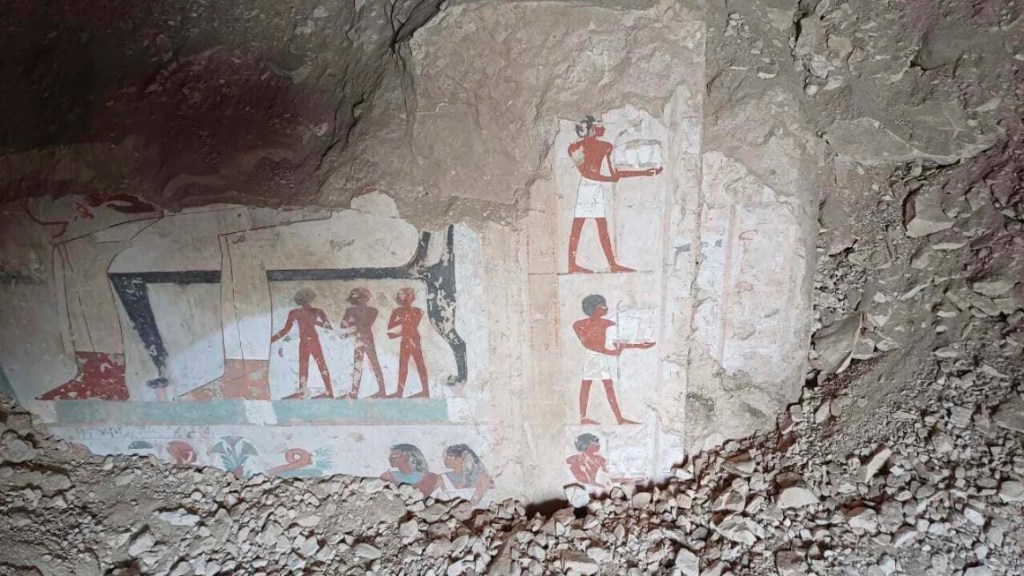Three ancient tombs dedicated to prominent Egyptian statesmen have been discovered in a burial complex in Luxor.
A team of Egyptian archaeologists made the discovery in the Dra’Abu El Naga, a significant non-royal necropolis located on the west bank of the Nile at Thebes, Egypt’s Ministry of Tourism and Antiquities announced on Monday.
Sherif Fathy, the Egyptian minister of tourism and antiquities, called the trio of tombs a “significant” addition to the country’s archaeological record in a post on the agency’s Instagram page, as first reported by CNN. Mohamed Ismail Khaled, secretary-general of Egypt’s Supreme Council of Antiquities, added in a statement that, thanks to well-preserved inscriptions inside the tombs, the excavation team was able to identity the names and titles of their occupants.
Related Articles

Inscriptions inside the tombs allowed the excavation team to identify the names and titles of their owners, Khaled said. One of the tombs reportedly belonged to an individual named Amun-em-Ipet hailing from the Ramesside period, or 19 (commonly classified as the 19th and 20th dynasties). He was employed at the temple of the estate of Amun, one of the chief deities of the ancient Egyptian pantheon, who is perhaps best known in his later iteration, Amun-Ra (a fusion of Amun and the Sun god, Ra).
Another tomb held a person named Baki who worked in the 18th dynasty as a granary supervisor, while the third tomb was dedicated to a man named Es who held several roles: scribe, supervisor of the temple of Amun, and mayor of the northern oases. Within Es’s tomb, the team found a small courtyard complete with a well linked to the main hall by long hall, as well as a second, incomplete hall. Baki’s tomb was comparatively more lavish—it contained two courtyards—but fell short of Amun-em-Ipet’s resting place, which consisted of a small courtyard and a square hall capped with a niche, where its western wall was damaged.
According to the ministry’s statement, further cleaning and study the inscriptions and burial shafts are underway in preparation of an academic publication. In the same post, Khaled noted that the discovery “is a boost to [Egypt’s] position on the global cultural tourism map.”

